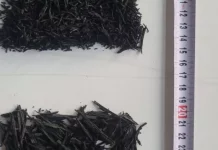From Our
Correspondent
BEIJING: Researchers have found that the loss of Arctic sea ice intensified the transport of pollutants, such as aerosols, to the Qinghai-Tibet Plateau, said the Chinese Academy of Sciences (CAS).
Due to the influence of atmospheric circulation, aerosols emanating from South and Central Asia around the Qinghai-Tibet Plateau are transported to the plateau and affect its climate and environment.
Researchers from Chinese and foreign institutions, including the Institute of Tibetan Plateau Research (ITP) under the CAS and the University of Bergen in Norway, analyzed atmospheric aerosol data of the plateau.
The study revealed that aerosol optical depth, the measurement of aerosols, mostly showed a significant annual peak in April, which was the high incidence period of activities involving pollution such as forest fires and stubble burning in South Asia. The loss of sea ice in the Arctic, owing to global warming, influences atmospheric circulation. It eventually results in the intensified transport of aerosols and other pollutants toward the Qinghai-Tibet Plateau, thus accelerating the melting of plateau glaciers, said Wan Xin with the ITP.
Published in the journal Nature Climate Change, the research findings provide a new perspective for understanding the cross-border transport of pollutants on the Qinghai-Tibet Plateau.






